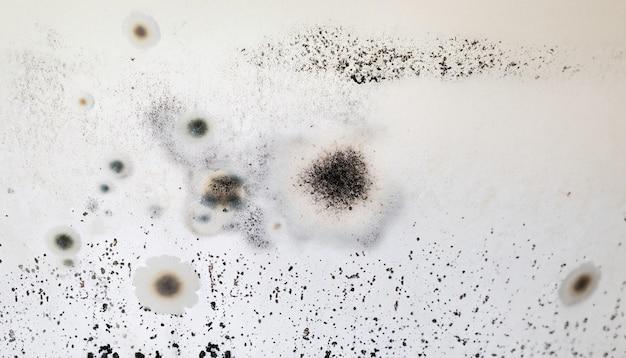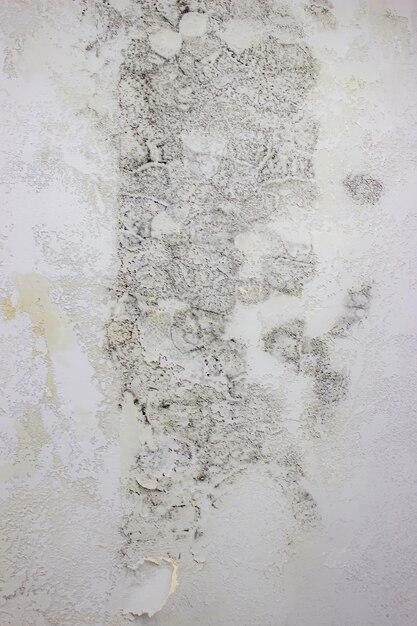Mold growth is a common problem in homes, and it can even occur underneath paint. If you’ve ever wondered what mold under paint looks like, this blog post is for you. In this article, we’ll explore the various signs of mold under paint and answer frequently asked questions such as whether mold can bleed through paint or if black mold grows on paint. We’ll also discuss the health risks associated with mold exposure and how to effectively get rid of mold on walls permanently.
Mold under paint is often not visible to the naked eye, making it difficult to detect. However, there are certain indicators that can help you identify its presence. From unusual discoloration and paint bubbling to damp odors and allergic symptoms, recognizing the signs can prevent further damage and potential health issues caused by mold. Join us as we delve deeper into understanding mold under paint and providing you with the necessary knowledge to address this issue in your home.
What Does Mold Under Paint Look Like
Have you ever wondered what lurks beneath the surface of your beautifully painted walls? Well, brace yourself, because we’re about to dive into the mysterious world of mold under paint. This isn’t your typical “painting 101” article. No, we’re going to uncover the hidden truth and unleash some humor along the way. So, grab your detective hat and let’s investigate what mold under paint really looks like!
The Telltale Signs: Unmasking Mold under Paint
-
Stains that Play Hide-and-Seek
Picture this: you’re enjoying a lovely cup of coffee in your living room when you notice an intriguing stain on the wall. It’s as if mold decided to create its very own abstract art installation. These stains can appear in various shapes and colors, ranging from ominous black blotches to suspicious greenish hues. If your walls resemble a polka-dot extravaganza or an avant-garde masterpiece, it’s time to put on your Sherlock Holmes hat.
-
The Peeling Paint Deception
Ah, the classic trickery of mold. It loves to play the role of a master illusionist. If your paint starts peeling off like a snake shedding its skin, don’t be so quick to blame it on your amateur painting skills. Mold has a knack for wreaking havoc beneath the surface, causing the paint to lose its grip and peel away. Remember, not all paint problems are simply due to nature’s wear and tear. Sometimes, the culprit is none other than our good friend mold.
-
Musty Odors: When Your Nose Knows
Trust your olfactory senses, my friend. If your nose is suddenly bombarded by a musty smell that rivals an ancient Egyptian tomb, take it as a sign from the mold overlords. Mold has a distinctive odor that lingers in the air like an unwelcome guest at a party. It’s that unmistakable scent that tells you something is amiss. So, if your room starts smelling like a forgotten basement or a long-abandoned cabin in the woods, it’s time to investigate further.
Unveiling the Hidden Truth: Taking a Peek Behind the Paint
-
Blistering, Bubbling, and Bulging
Let’s play a game called “Spot the Mold” with your walls. If you start noticing blistering paint, bubbling textures, or bulging surfaces, it’s a clear indication that mold has made itself a cozy home beneath your paint job. It’s like a secret party where mold invites all its spore friends to have a wild time, causing your walls to exhibit these rather alarming visual symptoms.
-
Cracks and Creepers
When your walls turn into a maze of cracks and crevices, mold might be the culprit sneaking through the shadows. These sneaky little spores love to exploit weak points in your paint’s defense, creating intricate networks of fissures. So, if your walls could be mistaken for a road map of a highly complicated city, mold may very well be the mayor of that town.
-
Warping and Warped Humor
Mold doesn’t just play with your walls; it loves to toy with your sense of humor too. So, when your once-flat walls start warping and waving like a mirage in the desert, it’s time to put on your comedy hat. Venturing into the realm of warped walls isn’t for the faint of heart, but with a little humor on your side, you can face whatever mold throws your way.
Congratulations, dear reader, you’ve become a mold detective extraordinaire! Now you know exactly what to look for when uncovering the sneaky mold under paint. Remember, mold isn’t just an unwelcome guest; it’s a clever master of disguise. So, keep an eye out for those telltale signs, follow your nose, and don’t let mold ruin your walls’ reputation. Stay vigilant, stay curious, and above all, stay mold-free!
Now, go forth and conquer the mysterious world of mold under paint, armed with your newfound knowledge and a dash of humor in your pocket. Happy wall explorations!
FAQ: What Does Mold Under Paint Look Like
So, you’ve got a sneaking suspicion that mold may be lurking beneath the surface of your freshly painted walls. Don’t worry, I’ve got answers to all your burning questions about what mold under paint looks like. From whether it bleeds through paint to harmless black mold, I’ve got you covered. Let’s dive right in!
Will Mold Bleed Through Paint
Absolutely! Mold is a sneaky little fellow that loves to play hide-and-seek. It can seep through paint, leaving unsightly stains on your once pristine walls. So, if you spot some suspicious discoloration or dampness on your freshly painted masterpiece, it’s time to crack down on that moldy intruder.
What Does Mold Look Like When Painted Over
Ah, the classic hide-and-seek move. Mold can cunningly camouflage itself under a fresh coat of paint, making it harder to detect. But fear not, my friend! Mold doesn’t like to stay hidden forever. Over time, you may notice the paint cracking, bulging, or even peeling off. That’s the mold saying, “Surprise, I’m back!”
What Does Harmless Black Mold Look Like
Oh, harmless black mold, the master of deception. Despite its innocent-sounding name, this sneaky fungus can still wreak havoc on your health. When it’s hanging out behind the scenes, it may appear as dark or black spots on your walls. Don’t be deceived by its unassuming appearance—it’s best to keep your distance!
How Do You Get Rid of Mold on Walls Permanently
Say goodbye to mold once and for all! To permanently bid farewell to your moldy foes, you’ll want to take a multi-step approach. First, gear up with gloves and a mask to protect yourself. Then, scrub the affected area with a mixture of bleach and water. After the scrub-down, let those walls dry out completely. And voila! Mold be gone!
How Do You Tell If Mold Is Growing Behind Walls
Ah, the mystery of mold behind walls! While you can’t exactly peek behind those solid barriers, certain signs can give you a clue. Keep an eye out for musty odors, dampness, or even the sudden appearance of allergies in your household. These sneaky indicators may point to mold hiding in the shadows.
Can You Kill Mold Under Paint
Absolutely! Mold may think it can outsmart you by hiding beneath your beautiful paint job, but don’t worry—it’s no match for your determination. With the right knowledge and tools, you can kick that moldy invader to the curb. Just remember to tackle it head-on, eradicating it from both the surface and the source.
Does Black Mold Grow on Paint
Oh, black mold, the drama queen of the mold world! While it can grow on almost any surface, including paint, don’t let it hog the spotlight. If you spot black mold partying on your painted walls, it’s time to show it who’s boss. Roll up your sleeves, grab your cleaning supplies, and give that mold the eviction notice it deserves!
How Do You Know If Mold Is Under Paint
Detective mode: engage! If you suspect mold is throwing a secret party beneath your paint, keep a keen eye out for any unusual signs. Watch for blistering paint, unusual discoloration, or even a funky smell. These subtle hints might just be your trusty sidekicks in your mold-busting adventure.
What Are Symptoms of Mold Exposure
Ah, mold exposure—the unwelcome guest that makes itself right at home. If you or your loved ones have been unwittingly exposed to this intruder, you might notice symptoms like coughing, sneezing, itchy eyes, or even skin rashes. But don’t worry, armed with knowledge, you can evict that mold and reclaim your indoor sanctuary!
What Does Mold in the Walls Look Like
Mold in the walls? Now that’s a dastardly accomplice! Though it’s not visible to the naked eye, its presence can be felt. Behind those seemingly innocent walls, you may notice a musty odor wafting through the air. So if your nose turns into a mold-seeking missile, let it guide you to victory!
How Long Does It Take Mold to Show Through Paint
Ah, the patience game with mold! While mold can sometimes take its sweet time to make an appearance, it’s best not to underestimate its determination. It may take weeks, months, or even years for mold to show through the paint. So stay vigilant and keep those walls in check!
Can Mold Behind a Wall Make You Sick
The answer is a resounding “Yes!” Mold lurking behind walls can have a serious impact on your health. From allergy-like symptoms to respiratory issues, it’s not a welcome guest at your health party. So if you suspect mold is throwing a hidden bash behind your walls, it’s time to put a stop to their shenanigans.
Does Peeling Paint Mean Mold
Peeling paint? Ah, the telltale sign that there may be more than meets the eye. While peeling paint can indicate various issues, mold is one sneaky culprit that can’t resist messing with your walls. So if the paint is making a run for it, it could be a sign that mold is wreaking havoc behind the scenes.
Will Mold Come Through Paint
Oh, it’s the grand finale of the mold show—will it break through the barrier of paint? The answer, my friend, is a definite possibility. Mold is a persistent little scoundrel that can seep through paint if it’s given the chance. So don’t let your guard down! Keep an eye out for any signs of mold crashing your paint party.
What If You Use Moldy Paint
Oh no, you’ve unwittingly used moldy paint! Fear not, my friend. While using moldy paint may not be the wisest choice, it’s unlikely to create a full-blown mold infestation. Simply wipe off the affected area, dispose of the moldy paint, and start fresh. Remember, next time, give your paint a thorough sniff test before diving into your masterpiece.
And there you have it, folks—a comprehensive FAQ-style guide to tackling the mysterious world of mold lurking behind paint. Arm yourself with knowledge, stay vigilant, and show that mold who’s boss. Time to rescue those walls and enjoy a mold-free haven in your home!

